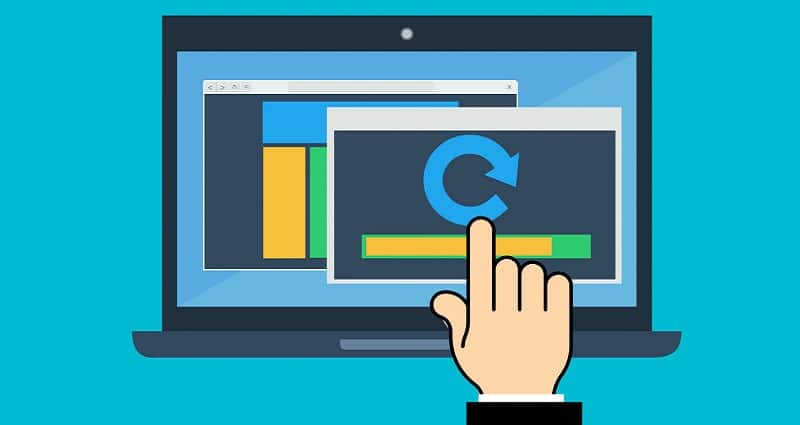10 Must-Keep Software Systems That You Don’t Really Need To Change in 2020

TechsPlace | Running a successful business is no longer determined by the quality of raw materials and the skills of the labor force used only. Software systems play a significant role, as well. They automate repetitive tasks and streamline processes. And you can then focus on other vital functions like decision making and policy implementation for Must-Keep Software.
There are numerous software solutions in the market, each promising to provide better functionality than the other. And sorting out the necessary from the unnecessary can get tricky.
We will make the task easier for you by listing ten software systems that you will still need in 2020.
What is a Software System for Business?
A software system is an application that helps with supporting and improving business processes. It automates these processes and makes it possible to complete tasks quickly and efficiently with zero errors.
A software system improves collaboration within the organization. It also cuts costs within the business by minimizing the labor force needed and reducing the cost resulting from human error.
What are the 10 Must-Keep Software Systems for 2020?
Here are ten Must-Keep Software systems you cannot do without in 2020.
1. Project Management Software
Project management software is the reason project managers and their teams complete tasks within the provided time range, budget, and scope constraints. It helps the project manager see how the task relates to the entire project
By using project management software, you can deliver quality work to your clients and maintain a long-lasting healthy relationship.
2. Database Software
Businesses use data management software to keep company files and records. It enables easy and quick access to company data.
With the increasing popularity of intelligent market research, there is even more reason to keep database software in 2020. The market research gives businesses a competitive edge by understanding consumers better. The data collected using web scraping techniques can be stored in the database software for assessment.
3. Customer Relationship Management Software (CRM)
Providing excellent customer service is vital for the success of any business. To earn customer loyalty, you need to address their issues on time, take feedback positively, and build a relationship based on trust.
CRM software will help your business maintain proper communication channels with clients. It streamlines processes that improve business relationships with potential and current customers. If you want to stay profitable in 2020, maintain your CRM software.
4. Accounting Software Systems
Every business that is actively in operation will always need an accounting software system for two reasons, maintaining accurate books and filing tax returns on time.
The government demands taxes from every business, and that is not about to change in 2020. Accounting tasks like VAT processing require precision and are time-sensitive. Errors and delays could attract hefty fines.
5. Payroll Software
Manually creating employees’ payroll using excel sheets can take too much time and contain numerous errors. Having to dispute their salary every month can be frustrating for employees, and you do not want unmotivated employees working with you.
Payroll software automates the calculation of employee hours, bonuses, and tax withholdings. It also sends prompt payments to the designated bank accounts.
6. Sales and Marketing Software
A business’s growth is determined by the number of new customers it can attract over time. If you want to stay ahead of the competition and increase profitability, you need sales and marketing software with you.
The software will help your business execute successful marketing campaigns, turn leads into sales, and tap fully into your target market.
7. Human Resource Software
Never underestimate the power of a happy workforce in contributing to the growth of a business. An effective human resource system will improve your employees’ experience and productivity.
It helps with recruiting top talent, keeping track of attendance, administrating benefits, and managing employees’ contracts. Human resource software also helps with compliance with regulatory requirements.
8. Product Lifecycle Management Software (PLM)
Creating a product that meets consumer needs, is competitive in the market, and functions as intended require continuous monitoring during its stages of life, from its development to its release in the market.
PLM software will help in coordinating the people and departments involved, including those in different geographical locations. It will assist with the management of the complex processes involved in developing a product, making it more efficient.
9. Billing Software System
Billing errors or delays can result in cash flow problems for a business. Undetected errors cause revenue leaks and can strain the relationship between your business and its customers.
These problems can be avoided by automating the process using a billing software system. It will streamline transactions, ensure that the invoices are prepared according to accounting standards, and completed on time.
10. Asset Management Software
Keeping track of all the business’s assets, both software and hardware can be tough for business owners. Asset management software simplifies their management and makes it easy to meet requirements such as license compliance.
The software ensures that every asset is utilized to the maximum. It makes certain that proper maintenance is observed, and the best value obtained during disposal.
Changing Must-Keep Software can be disruptive for your business. You will need to integrate it with your current systems, train your staff, and carry out a test run. However, some business processes remain constant, such as those in the production department, human resource, accounting, and marketing department.
If the software system you are using is functioning perfectly, there is no need to make changes in 2020. What you view as an upgrade could take your business steps back.
Frank Stovall is an avid traveler and adventurer. As the active public relations manager for XO where one can book a flight on private jets in an instant using XO’s software.





